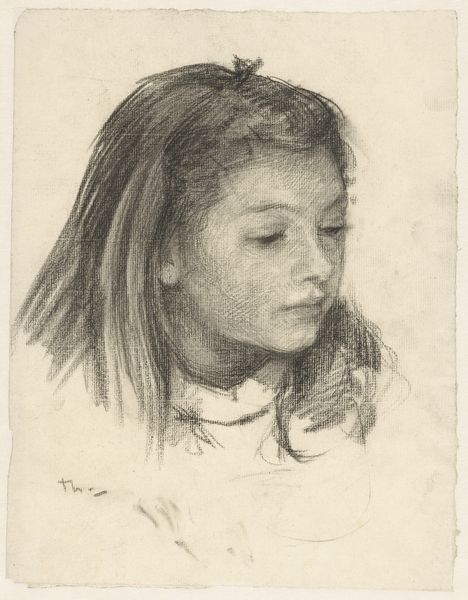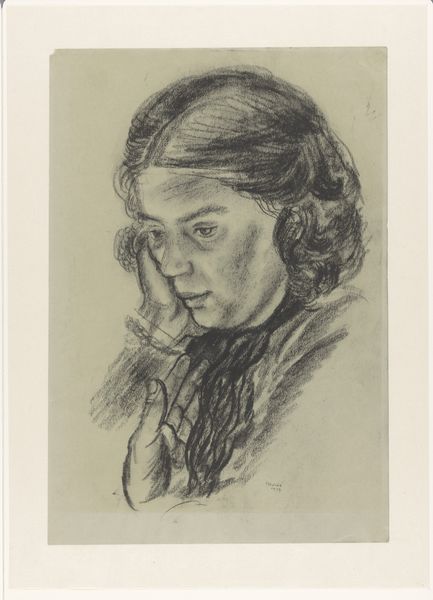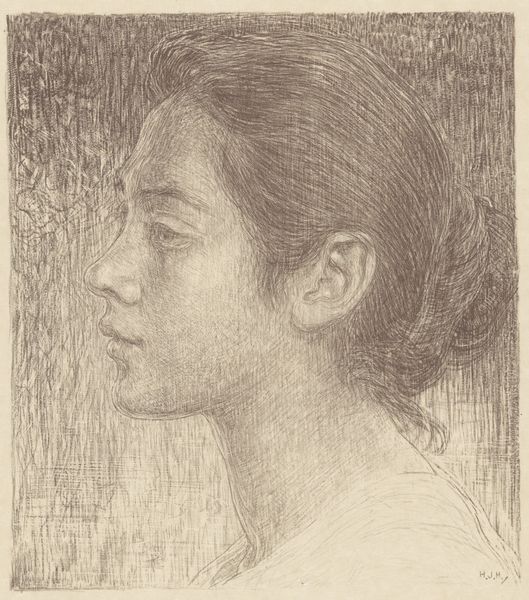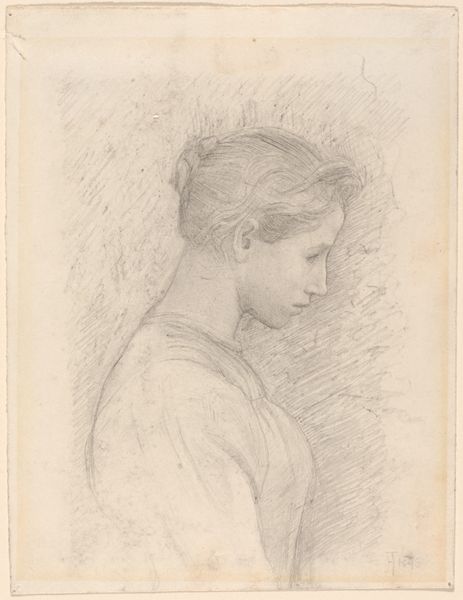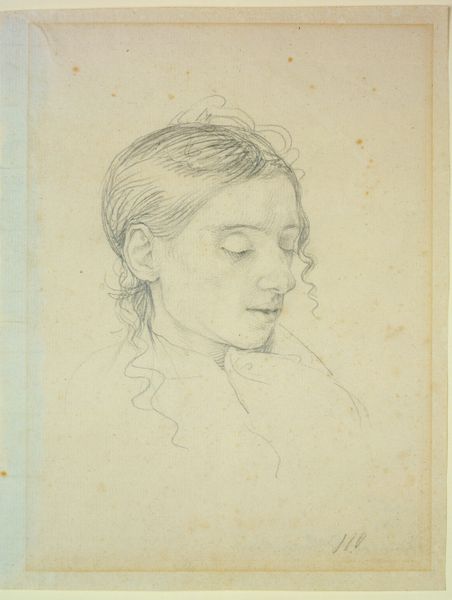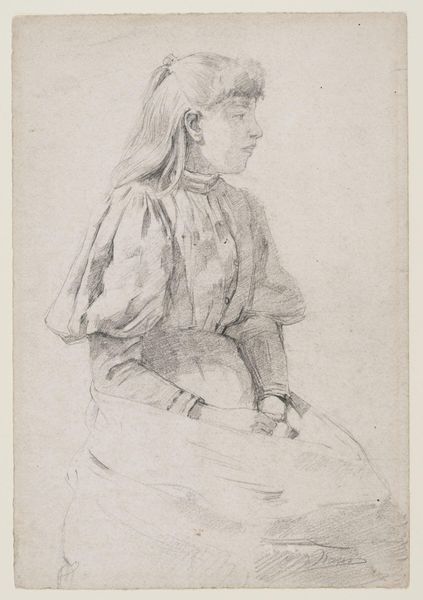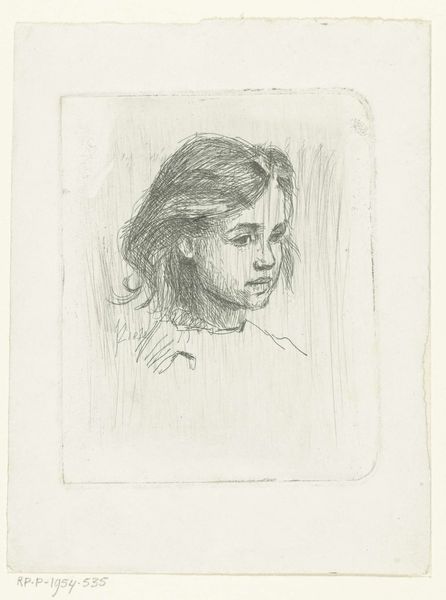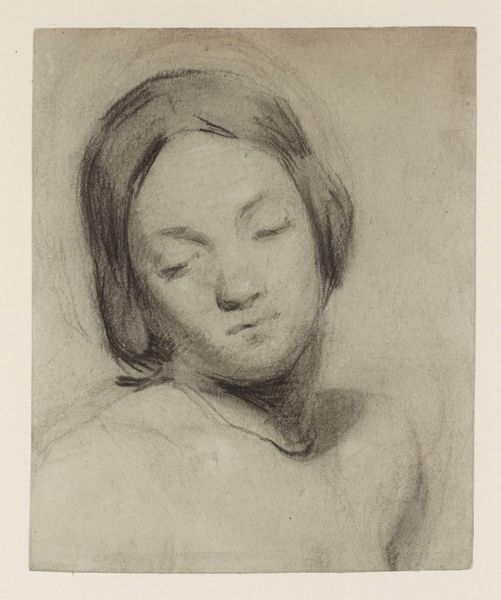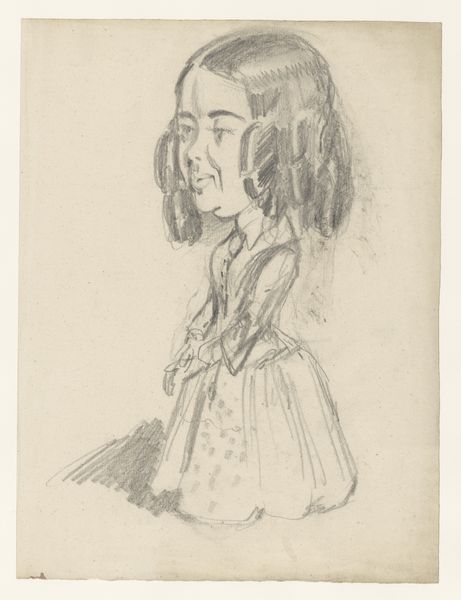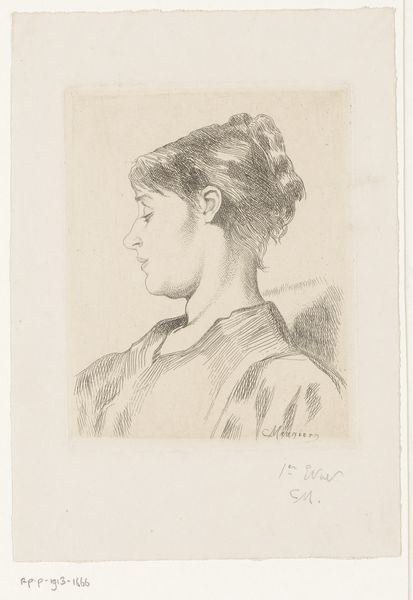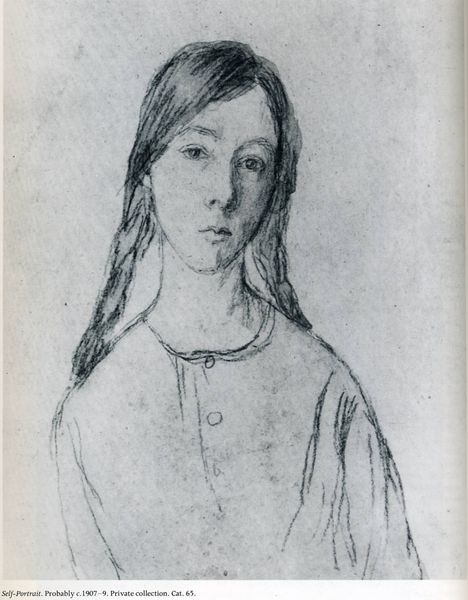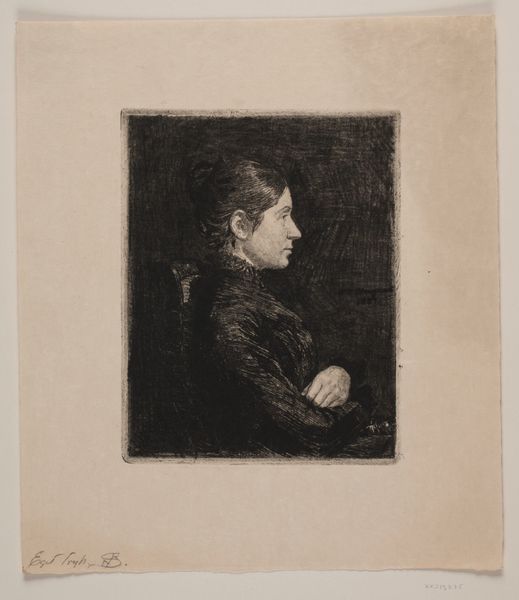
drawing, paper, chalk
#
portrait
#
pencil drawn
#
drawing
#
facial expression drawing
#
light pencil work
#
16_19th-century
#
pencil sketch
#
charcoal drawing
#
paper
#
portrait reference
#
german
#
pencil drawing
#
chalk
#
animal drawing portrait
#
portrait drawing
#
pencil work
Copyright: Public Domain
Curator: Looking at this lovely, light portrait, attributed to Otto Scholderer, made with chalk and pencil on paper…it has an understated presence. Editor: Yes, and something melancholic, even wistful, about the young girl's downcast gaze. It makes you wonder what she's thinking about. Curator: Absolutely. Knowing Scholderer was deeply embedded in the art scene of his time, a friend of artists like Gustave Courbet, the way he portrays this girl through such accessible and easily available material like chalk and pencil feels notable. It moves beyond the tradition of oil painting to a focus on process and material accessibility. Editor: It speaks to a shift, doesn’t it? Considering the historical context of burgeoning industrialization, seeing artists turn to readily available materials could be viewed as a quiet comment on consumerism and the changing definition of "high" art itself. Was this perhaps meant for a broader audience? A preparatory work made public rather than a private commission? Curator: Exactly. By choosing these materials, he democratizes the artistic process. It begs us to consider how accessible artistic tools are to everyone and how skill transforms everyday items into fine art. There's an element of labor—both his own and the unseen labor involved in producing those very pencils—that becomes part of the piece. Editor: And the setting too! Placed within the context of portraiture conventions of the time, how do you think the artwork situates itself? I note the subject’s relative anonymity is a possible reflection on the middle classes of the era? Curator: That’s insightful. And the museum, of course, plays a pivotal role in how we view this artwork now. Placing it here, giving it a platform, legitimizes the drawing. Editor: It highlights that the politics of display matter greatly, imbuing value. The Staubdel Museum’s own history influences our understanding too. It’s so intertwined. Curator: Indeed. Seeing this artwork has prompted me to consider how artists grapple with accessibility through their work and that the line between commodity and cultural object is perpetually blurred. Editor: And for me, reflecting on it reminds us of the significance of social context, that our own experiences colour what we consider relevant in our understanding.
Comments
No comments
Be the first to comment and join the conversation on the ultimate creative platform.
